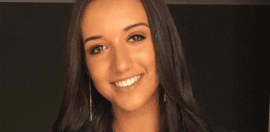Bridging the gap between young people and decision makers

9 August 2021 at 11:05 pm
The recurring narratives of “no one listens to us young people” versus “young people are naive” are unhelpful. It’s time for young people and decision makers to reframe their view of each other from adversaries to partners, write Ali Noura and Imana Sabrina, co-founders of Bridging Us.
A group of youth advocates and a minister walk into a meeting. The 30-minute meet-and-greet becomes a fiercely passionate two hour debate about some of the biggest issues that young people face. But nothing gets resolved or agreed upon, and there is no next meeting set afterwards. After the meeting, the youth advocates vent our frustrations that no matter how much evidence we bring, how many of us there are, and how many times we bring up issues to decision-makers, decision makers simply “don’t listen to young people”.
But is this the full story?
You see, going through university we both pretty much had the same attitude towards decision-makers – that they didn’t really understand where we were coming from. Yet when we started working across the public, private and community sectors and spoke to our managers and executives, we heard a different story.
The story we heard was one of decision-makers who fully empathised with young people and the issues they were fighting for. Indeed, these same decision-makers had joined these sectors for the same reasons.
Their challenge was not the issue at hand but youth advocates not acknowledging the day-to-day considerations that decision makers had: “how will this be funded?”, “has there been buy-in from key stakeholders?”, “what is the timeline for getting this done?”.
What become clear to us was that the two narratives of “no one listens to us young people” versus “young people are naive” kept clashing over and over again, whether it was in the private, public or community sector, whether it was on the topic of employment, mental health, or environment, and whether it was in Australia or in Indonesia.
We had worked in both these worlds, the world of the advocate and the world of the policymaker, and what we saw was young people and decision makers speaking past each other even when everyone agreed that the issue at hand was a problem.
“So how could we get them on the same page?”, we wondered. That’s why we founded Bridging Us, to close the gap between young people and decision makers.
Discovering co-design
By chance we accidently discovered co-design, which is quickly becoming a new buzz word across the world and like many new trends it’s hard to find a definition everyone agrees to.
For us at least, co-design is simply bringing relevant stakeholders together to create innovative and mutually agreeable solutions to a shared problem.
Yet co-design is much more than just a new trend or a new way to facilitate workshops.
Co-design offers a new mindset for how both young people and decision-makers can rethink advocacy, problem-solving and social change. Co-design does this by allowing young people to understand the practical constraints on structural change whilst allowing decision-makers to understand from a grassroots perspective what is happening on the ground and what actually needs to change.
At its core, co-design represents a devilishly simple idea: the best solutions can only come from hearing different perspectives, even and especially from our “opponents”.
So how does one “co-design”?
First, we need to build mutual tolerance as the foundation for social change, because sledging, name-calling, and making broad brush statements like “young people are naive” or “decision makers are out-of-touch” only leaves all of us with frustration, distrust and no progress.
Decision-makers need to recognise that young people are well-informed and often personally affected by the issues they are advocating for, making their insights invaluable to the work of decision makers. Decision makers have the opportunity to harness these insights by taking the time to speak honestly and jargon-free to young people about the practical challenges of creating structural change.
Likewise, young people need to recognise that decision makers are well-intentioned and have the industry networks needed to secure sector support for change at the highest levels of authority. Young people have the opportunity to harness these industry networks by taking the time to show decision makers the practical steps of their proposed change, adjusting their approach from one of social mobilisation to one of practical considerations.
If young people and decision makers can come together and reframe their view of each other from adversaries to partners – even if we disagree and clash – then both parties will have a chance at sustainable and effective community change.
This article is part of a monthly series, Youth Matters, a collaboration between Youth Affairs Council Victoria and Pro Bono Australia to inject the voices of young people into the social change sector.









